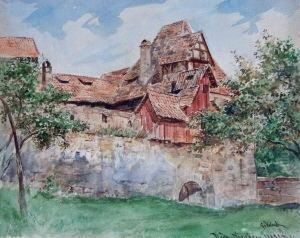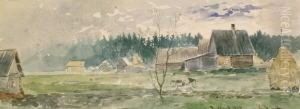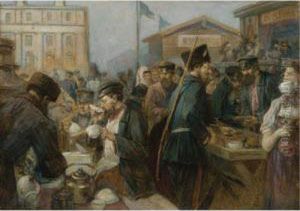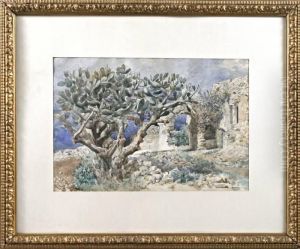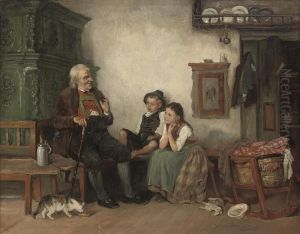Georg Johann Christ. Urlaub Paintings
Georg Johann Christof Urlaub was a German painter and engraver who was born on July 26, 1713, in Giebelstadt, near Würzburg, Germany. He is best known for his portraits, although his oeuvre also includes historical scenes, genre paintings, and religious images. Urlaub is considered a representative of the late Baroque period and his work demonstrates a transition towards the Rococo style that was gaining popularity in the 18th century.
Urlaub received his initial training from his father, Johann Michael Urlaub, who was a painter and fresco artist. He continued his education in the arts at the Würzburg Residence, a palace in Würzburg that was renowned for its artistic community and the quality of its workshops. There, he likely came into contact with Giovanni Battista Tiepolo, an Italian master whose work had a significant influence on Urlaub's style.
Throughout his career, Urlaub worked for various ecclesiastical and secular patrons. He created altarpieces for churches and produced engravings in addition to his portrait work. His portraits are particularly noted for their detailed representation of fabrics and materials, as well as the lifelike depiction of his subjects. While his early work is rooted in the Baroque tradition, his later pieces show a lighter palette and more playful elements characteristic of the Rococo movement.
Urlaub's career was relatively short, as he died at the age of 46 on June 29, 1759, in Würzburg. Despite his early death, he left behind a body of work that has been appreciated for its craftsmanship and historical value. His paintings can be found in various collections and museums, offering insights into the artistic trends and cultural milieu of 18th-century Germany.
